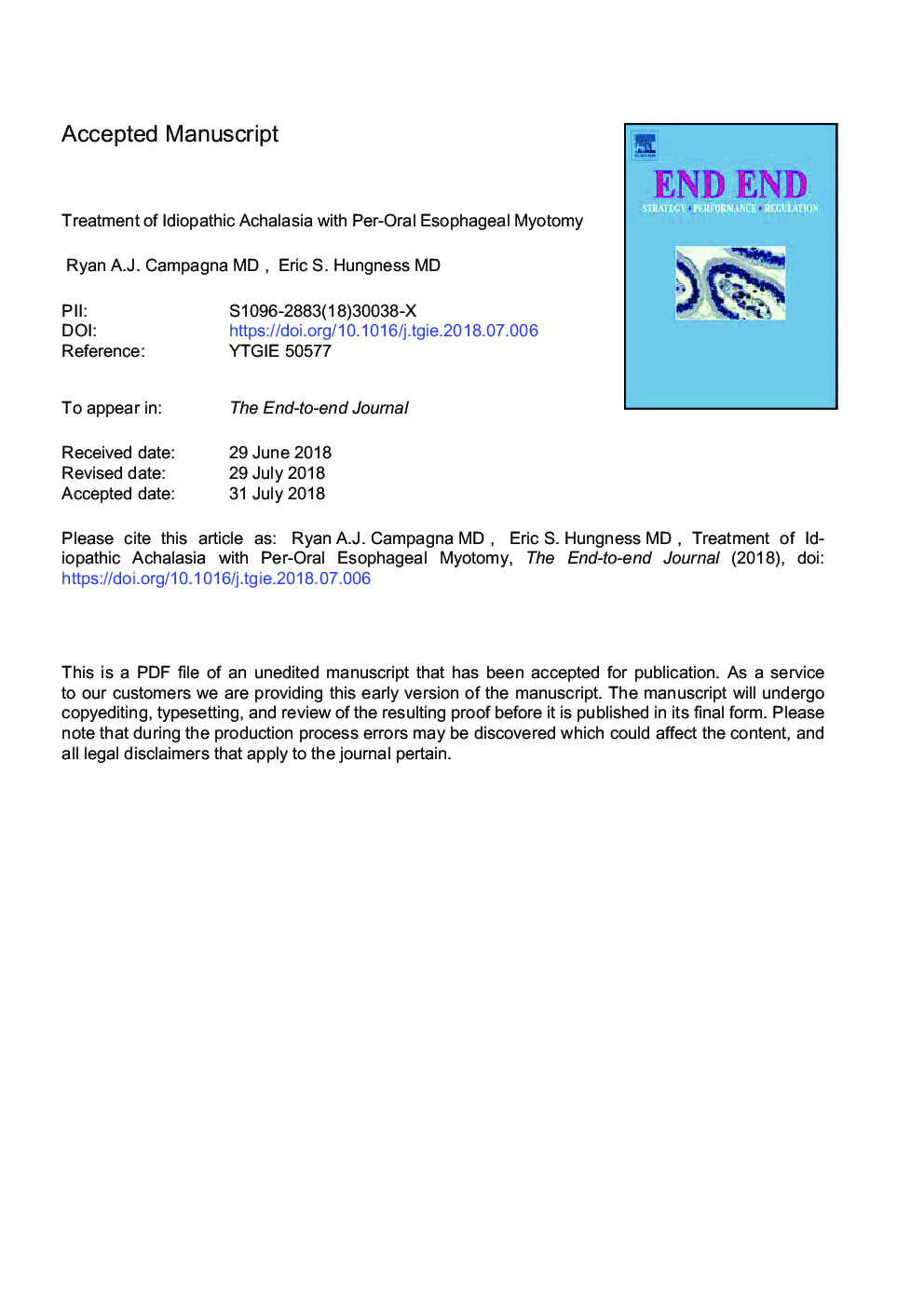| Article ID | Journal | Published Year | Pages | File Type |
|---|---|---|---|---|
| 11022209 | Techniques in Gastrointestinal Endoscopy | 2018 | 18 Pages |
Abstract
Achalasia is a rare esophageal motility disorder that necessitates the disruption of the lower esophageal sphincter. Patients with achalasia should be evaluated in a systematic, multidisciplinary fashion. Workup should include upper endoscopy, esophagography, and high-resolution manometry. The gold standard for surgical treatment is laparoscopic Heller myotomy with partial fundoplication. Per-oral esophageal myotomy is a novel endoscopic technique that has gained considerable traction over the past decade. The procedure includes the creation of a submucosal tunnel and a selective circular myotomy of the lower esophageal sphincter. Common intra-operative hazards include bleeding within the submucosal tunnel and capnoperitoneum. Significant complications are rare. Patients experience excellent dysphagia relief that is on par with laparoscopic Heller myotomy at moderate-term follow up. Post-operative gastroesophageal reflux disease occurs in greater than one-third of patients, and the vast majority of cases are readily controlled with an anti-secretory medication. Although data is sparse, there is a growing body of literature that supports the long-term durability of per-oral esophageal myotomy.
Keywords
Related Topics
Health Sciences
Medicine and Dentistry
Gastroenterology
Authors
Ryan A.J. Campagna, Eric S. Hungness,
